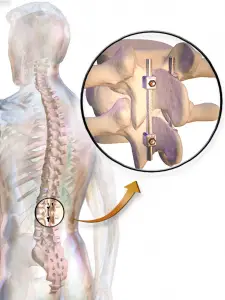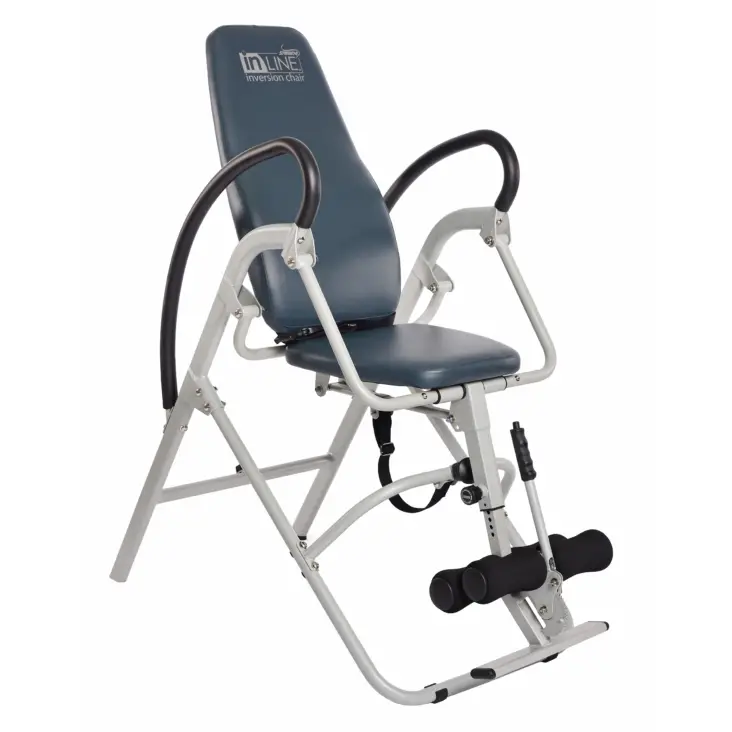Can you use an Inversion Table after spinal fusion surgery? It is a common question that many people want to know. Spinal fusion is surgery for people who have been in tremendous pain and have had difficult challenges with their spinal area.

Spinal fusion is the joining together of two or more vertebrae discs in your spine to help with relieving pain. Spinal fusion can be very painful for patients who just want to permanently get rid of the pain. Are Inversion Tables good for this spinal fusion population? Read on in this article to discover the answer to this question and more.
Can You Use An Inversion Table After Spinal Fusion?
Although an Inversion Table is safe for some patients who have gone through surgery, it is recommended to speak with your spinal surgeon before doing physical activity of any kind, including exercising on The Inversion Table.
Why Does a Person Need Spinal Fusion?
There are many reasons why a person may need spinal fusion surgery that include: correcting deformities of the spine for conditions like scoliosis and other spinal disorders. Spinal weakness or instability due to arthritis of the spine can also be a reason why people need spinal fusion surgery.
A herniated disc is another reason for spinal fusion surgery. The disc is damaged and needs to be replaced. Fusing two healthy discs together helps to repair the problem.
Patients who are considering using and Inversion Table to relieve any pain are probably considering the fact that The Inversion Table will elongate the spine, while giving more space between the vertebrae discs. This space allows the discs to relax and take pressure off your spine.
Your spinal surgeon will be the best resource to tell you if using The Inversion Table is a good idea. While surgery should help correct the spinal issue, some of the pain may still exist. The Inversion Table may be a great alternative way to relieve any recurring pain after surgery.
What Do I Do if My Spinal Surgeon Approves Use of The Inversion Table?
It is important for any surgery patient to start an exercise regimen slowly and then build to the next level. Begin by using The Inversion Table for the minimum amount of time which is 1 minute for 2 times each day. Do not put extra pressure on your body, particularly if this is your first time doing physical activity after surgery. Strap yourself in securely on the table to ensure that your spine is stable on the table.
Begin at the lowest angle possible. Do not change angles until you are comfortable with moving to the next level. Experts say that you should only move between 10 – 20 degree angles every week until you get to 60 – 90 degree angles.
Always have an assistant to help you get on and off the table. Your assistant should be available for the entire time that you are on the table. He should have a stopwatch to ensure that you stay on the table for only 1 minute.
If you become dizzy or nauseated while on the table, your assistant should get you off the table immediately and get you to fresh air. Breathe deeply once you are off the table until your heart rate returns to normal.

What Should I Do If My Spinal Surgeon Tells Me That I Cannot Use The Inversion Table?
If your spinal surgeon tells you that The Inversion Table is not a good idea for treatment, then you must always listen to your surgeon or doctor. He is the best resource for you, because he understands your medical history and what your body can and cannot do. Discuss other alternative treatments instead of The Inversion Table that will accommodate your goal of continuing to relieve any pain after surgery.
These are some common need to know answers to questions regarding using The Inversion Table to help with pain that may come after spinal fusion surgery. Always speak with your doctor or spinal surgeon before doing any type of exercise program. After all, spinal fusion is something that is going to change your spinal structure for the rest of your life.
Spinal surgery is permanent and will require you to live a different lifestyle. Exercising will need to be done in a milder way than you may be used to. The surgery may cause limitations in the way you move, bend, lift objects or do chores around your home. Lifting heavy objects will no longer be allowed because of the strain and pressure that it will put on your spine, vertebrae discs, back and neck.
Remember that after spinal fusion surgery, you will begin a new way of life. If your doctor or surgeon approve of you using The Inversion Table, do not become overwhelmed and try to do everything at once. Take baby steps to help your body heal completely, so that it can function as it should.
Keep your spinal surgeon updated on how your exercise program on the table is going and let him know if there is any pain or pressure being put onto your spine. There are many beginning exercises that should be tried on the table.
Do not over exert yourself by being on the table longer than the maximum time. And do not try advanced level exercises when you have just started physical activity after surgery. Safety is always the most important thing for your body after spinal fusion surgery.
Day by day, you will begin to feel more comfortable on the table. Begin by learning how to balance on the table which will help elongate and stretch your spine without over exerting yourself. The balance exercise on the table will help put space between the vertebrae discs which act as cushions for your spine.
Consider your time on the table your me time and the best way to get your body back to as close to normal as possible. While using the table will not be easy at first, it will begin to get easier the more you use it. Speak with the store representative to learn about setting up your Inversion Table. He can help you with instructions on how to get on and off the table and how to tip yourself to get the right angles on the table.




